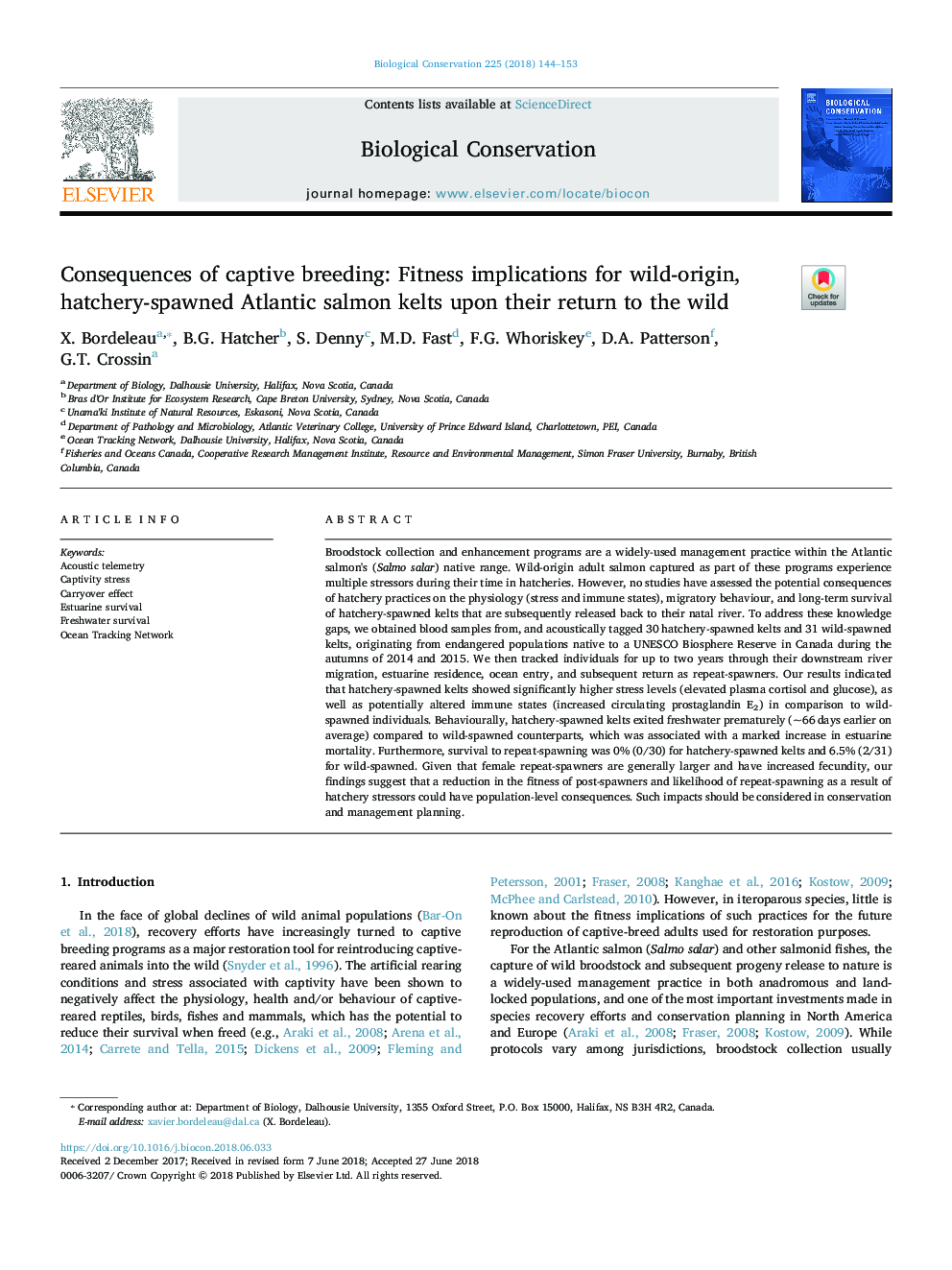| کد مقاله | کد نشریه | سال انتشار | مقاله انگلیسی | نسخه تمام متن |
|---|---|---|---|---|
| 8847144 | 1617880 | 2018 | 10 صفحه PDF | دانلود رایگان |
عنوان انگلیسی مقاله ISI
Consequences of captive breeding: Fitness implications for wild-origin, hatchery-spawned Atlantic salmon kelts upon their return to the wild
ترجمه فارسی عنوان
عواقب کشتیرانی اسارت: پیامدهای تناسب اندام برای وحشی، پرورش خرگوش آتلانتیک دریای آزاد در زمان بازگشت آنها به وحشی
دانلود مقاله + سفارش ترجمه
دانلود مقاله ISI انگلیسی
رایگان برای ایرانیان
کلمات کلیدی
تله متری آکوستیک، استرس انسانی، اثر حمل، زنده ماندن، بقای آب شیرین، شبکه پیگیری اقیانوس
موضوعات مرتبط
علوم زیستی و بیوفناوری
علوم کشاورزی و بیولوژیک
بوم شناسی، تکامل، رفتار و سامانه شناسی
چکیده انگلیسی
Broodstock collection and enhancement programs are a widely-used management practice within the Atlantic salmon's (Salmo salar) native range. Wild-origin adult salmon captured as part of these programs experience multiple stressors during their time in hatcheries. However, no studies have assessed the potential consequences of hatchery practices on the physiology (stress and immune states), migratory behaviour, and long-term survival of hatchery-spawned kelts that are subsequently released back to their natal river. To address these knowledge gaps, we obtained blood samples from, and acoustically tagged 30 hatchery-spawned kelts and 31 wild-spawned kelts, originating from endangered populations native to a UNESCO Biosphere Reserve in Canada during the autumns of 2014 and 2015. We then tracked individuals for up to two years through their downstream river migration, estuarine residence, ocean entry, and subsequent return as repeat-spawners. Our results indicated that hatchery-spawned kelts showed significantly higher stress levels (elevated plasma cortisol and glucose), as well as potentially altered immune states (increased circulating prostaglandin E2) in comparison to wild-spawned individuals. Behaviourally, hatchery-spawned kelts exited freshwater prematurely (~66â¯days earlier on average) compared to wild-spawned counterparts, which was associated with a marked increase in estuarine mortality. Furthermore, survival to repeat-spawning was 0% (0/30) for hatchery-spawned kelts and 6.5% (2/31) for wild-spawned. Given that female repeat-spawners are generally larger and have increased fecundity, our findings suggest that a reduction in the fitness of post-spawners and likelihood of repeat-spawning as a result of hatchery stressors could have population-level consequences. Such impacts should be considered in conservation and management planning.
ناشر
Database: Elsevier - ScienceDirect (ساینس دایرکت)
Journal: Biological Conservation - Volume 225, September 2018, Pages 144-153
Journal: Biological Conservation - Volume 225, September 2018, Pages 144-153
نویسندگان
X. Bordeleau, B.G. Hatcher, S. Denny, M.D. Fast, F.G. Whoriskey, D.A. Patterson, G.T. Crossin,
